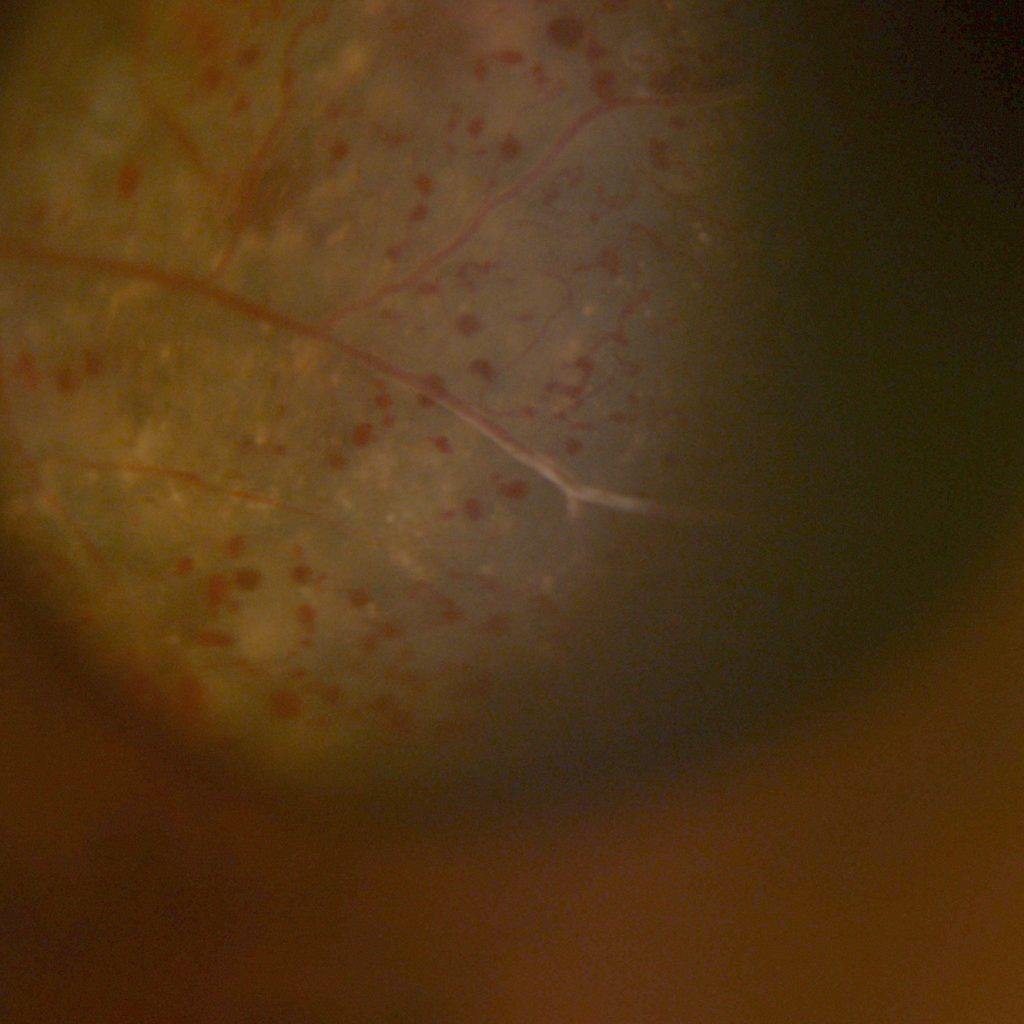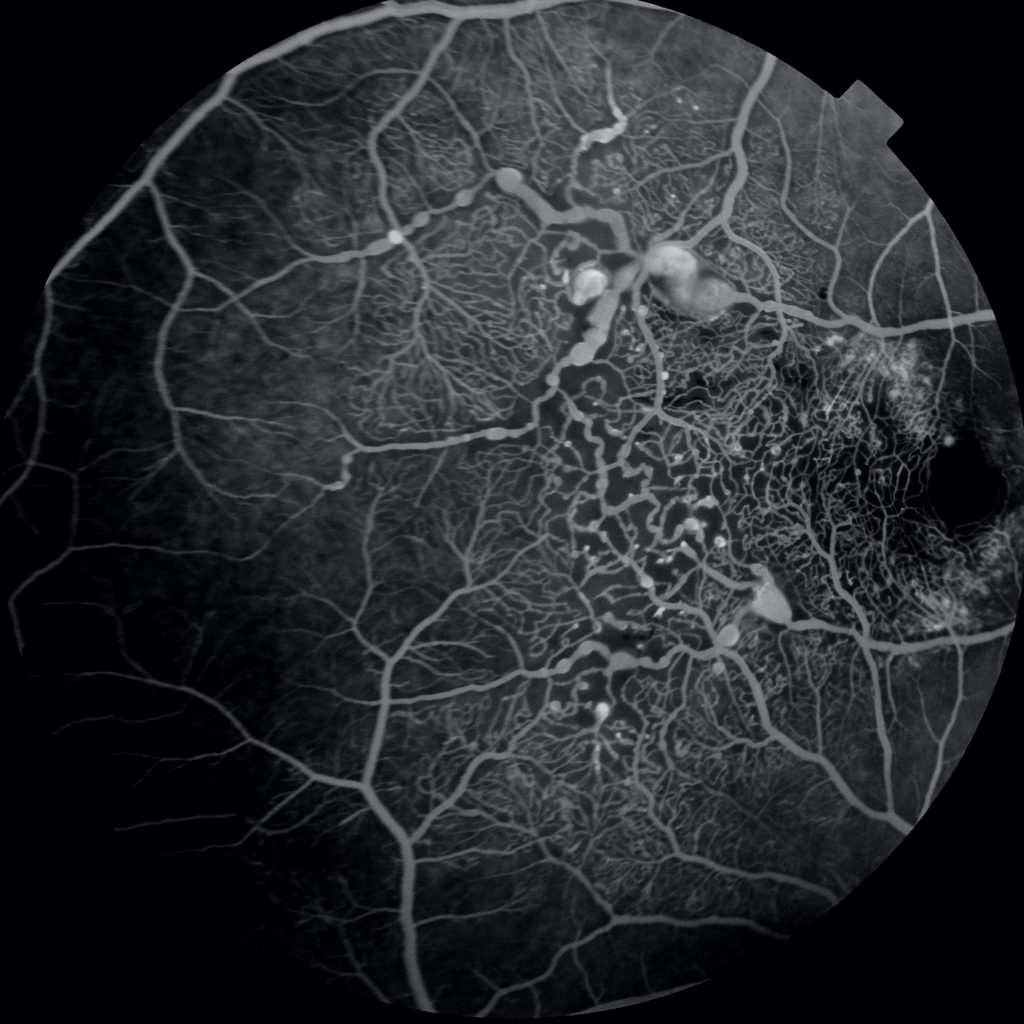Coat’s Disease
What is Coat’s disease?
Coat’s disease is an eye disorder characterised by abnormal development of blood vessels in the retina. These blood vessels leak fluid, causing lipid (yellow material) accumulation within the macula (the central most part of the eye). Due to the leaking blood vessels, the fluid accumulates under the retina, causing retinal detachment, resulting in reduced vision which may eventually lead to complete blindness.
What are the signs of Coat’s disease?
Mostly the symptoms begin in childhood . Earliest signs include poor vision/ vision loss and crossed eyes. Sometimes a yellow or white pupil (leukocoria) is noticed. Coat’s disease mostly affects only one eye.

Who is at risk of developing Coat’s disease?
Coats’ disease is a rare disorder common in young boys. It is mostly discovered in children before the age of 10 years (severe form) however, it may also present in adults (mild form).
What causes it?
No cause has been identified.
How can your doctor identify the disease?
Generally the doctor advises some diagnostic tests such as:
- Fundus Montage image
- OCT
- Ultra-Wide Field FFA

Can Coat’s disease be cured?
Coats’s disease is a progressive disorder with no cure. However, there are treatments to slow down the progression, and if detected -and treated- early, some vision may be preserved.
How can it be treated?
The treatment varies from patient to patient and depends on the severity of the disease at presentation.
- Commonly laser is done to close the abnormal blood vessels and treat the non-functioning part of the retina. If laser is not possible, sometimes freezing treatment called cryopexy is given.
- Injections of anti-VEGF may be given to reduce abnormal leakage and blood vessel growth.
- Some patients may require surgical procedures to fix the detached retina.
What if Coat’s disease is not treated?
Coats’ disease, if left untreated, can lead to blindness or uncontrolled pressure inside the eye, sometimes causing pain. In severe cases the eye may have to be removed (enucleation).
Further Reading:
https://www.aao.org/eye-health/news/coats-disease-yellow-eye-photo-child-vision-loss


